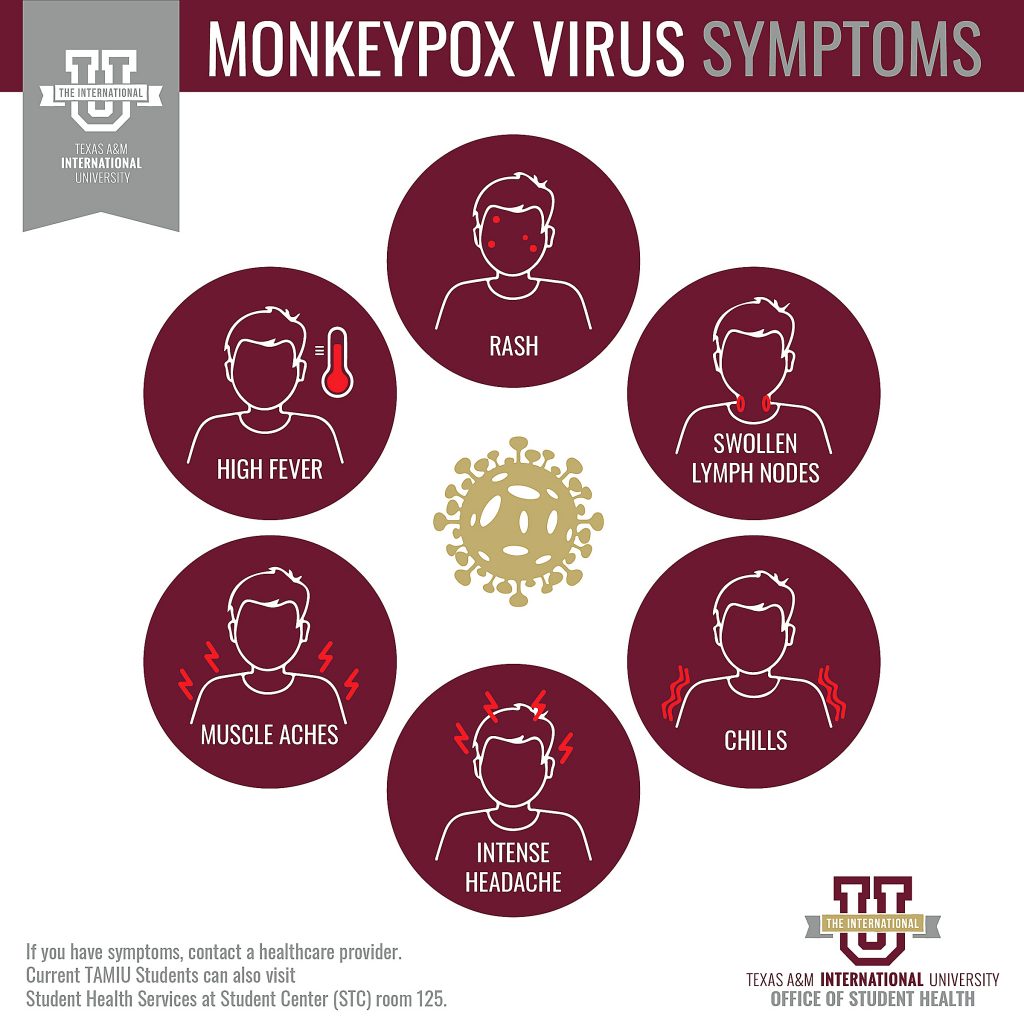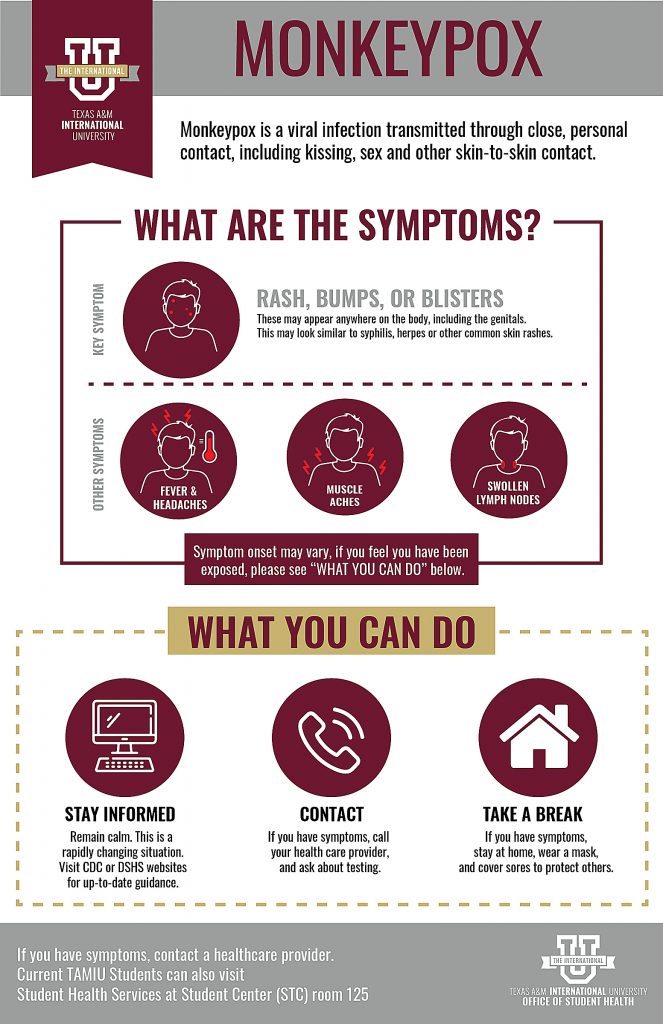HEALTH: 1950s flashback virus threatens human contact
By Caroline Rivera
Bridge contributing writer
Published Tuesday, Nov. 1, 2022
While many flashbacks to the 1950s summon images of Elvis or pop culture, one particular human health threat returns to haunt people.
The variola virus, which causes smallpox, led to other viruses such as cowpox viruses and more recently in the form of monkeypox.

Posters like this have been placed all around campus this semester, such as in restrooms, to inform students of the monkeypox virus symptoms.
Student Health Services Director Claudia C. Beltran finds herself on the frontlines of these types of health concerns at Texas A&M International University.
“It’s basically an infection caused by the monkeypox virus, it’s the same virus that causes smallpox,” Beltran said. “The virus itself has existed for a very long time—since the ‘50s it [has] existed.”
The World Health Organization reports on its who.int website that the monkeypox disease is caused by the monkeypox virus, a member of the orthopoxvirus genus, poxviridae family.
According to the Centers for Disease Control and Prevention website cdc.gov, “Because monkeypox virus is closely related to the virus that causes smallpox, the smallpox vaccine can protect people from getting monkeypox. Past data from Africa suggests that the smallpox vaccine is at least 85% effective in preventing monkeypox.”
The CDC also offers, “African rodents and non-human primates—like monkeys—might harbor the virus and infect people.”
This supports the idea behind the name. The CDC reported that a pox-like outbreak happened in a colony of monkeys, which shows where the disease may have begun.
Monkeypox can start as pimples or blisters; pain or itchiness may occur. A rash can be visible to the naked eye, which could contain liquid. If ruptured, that liquid content can spread monkeypox to others during skin-to-skin contact.
“[It] spreads through intimate contact,” Beltran said. “It could be oral, vaginal or anal sex.
“Symptoms that are very non-specific—meaning that they are very general—like fever, fatigue, chills, headache, muscle aches. If you think about those symptoms, it could be anything, that could be the flu, that could be a throat infection.”

Posters like this have been placed all around campus this semester, such as in restrooms, to inform students of the monkeypox virus symptoms.
Symptoms can last from two to four weeks, according to WHO. Severe cases can occur, with a reported fatality ratio of 3% to 6%.
In addition to the protection from smallpox vaccines, WHO reports on who.int, “Newer vaccines have been developed of which one has been approved for prevention of monkeypox.”
Beltran adds that one thing to really look for is the rash.
“That, people will develop and they tend to develop this rash like in their genital area,” Beltran said. “The rash can go to other places, it can go to the hands, it can go to the chest or even [on] the face.”
Furthermore, epidemiologist Sarah L. Hernandez from the city of Laredo Health Department said, “There [are] several symptoms including headache, fever, the lesion itself and inflammation of the lymph nodes—also, body aches, feeling tired.”
To get infected with monkeypox, one must be in contact for a prolonged period.
“It is like a very low infectious level,” epidemiologist Dali Quinones said. “You have to be in very close proximity [of] the person and be with them for long periods of time.”
TAMIU has no reported monkeypox cases, Beltran said.
“Fourteen persons are under investigation,” Hernandez said of the citywide statistics. “Of those 14, 10 have been negative, and four confirmed cases.”
Suspected cases are those who were in close contact with an infected person.
Quinones referenced the CDC article, “If an individual is in a flight with a person who has monkeypox, they should undergo investigation if they’re in the same flight for more than three hours.”
To avoid contacting monkeypox, people must maintain a clean and safe lifestyle, Quinones said.
“Maintaining hygiene, not only with yourself but of your surroundings,” Quinones said, “just to prevent any sort of … contamination either to you, to other people or the other way around, [to prevent] you [from] contracting something from someone else.”
“So, the best way, if you’re working in a public setting, [is to] maintain … gloves could be a good indicator preventing any contact with the virus even though it’s not that contagious, it could be recommended, sort of like maintaining the same regulations with coronavirus.”
Around campus, the TAMIU Public Relations Office, with the help of the Student Health Office, posted various posters to inform students about monkeypox symptoms and precautions.

hello